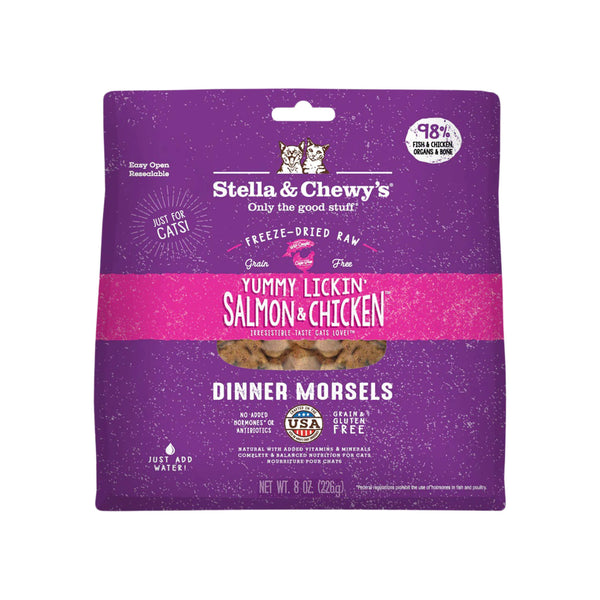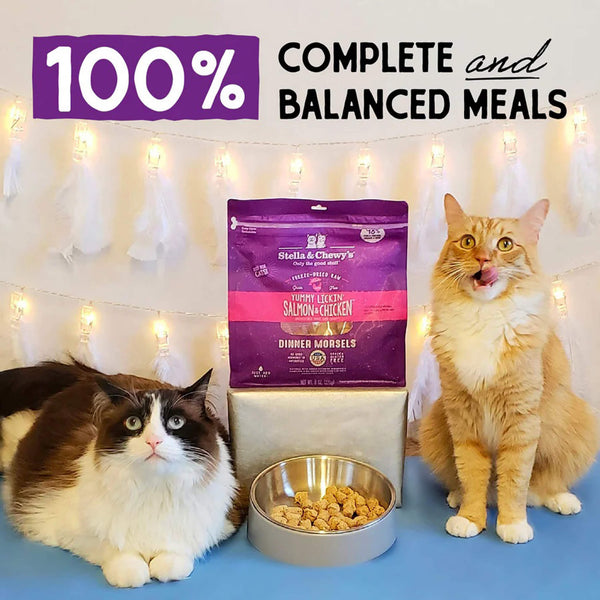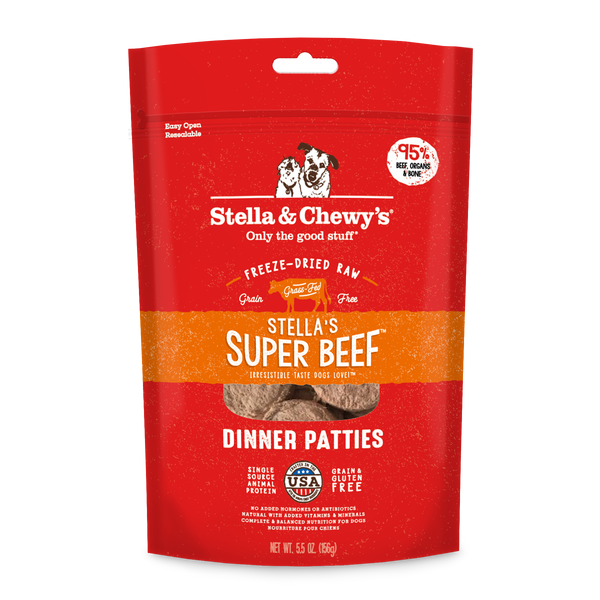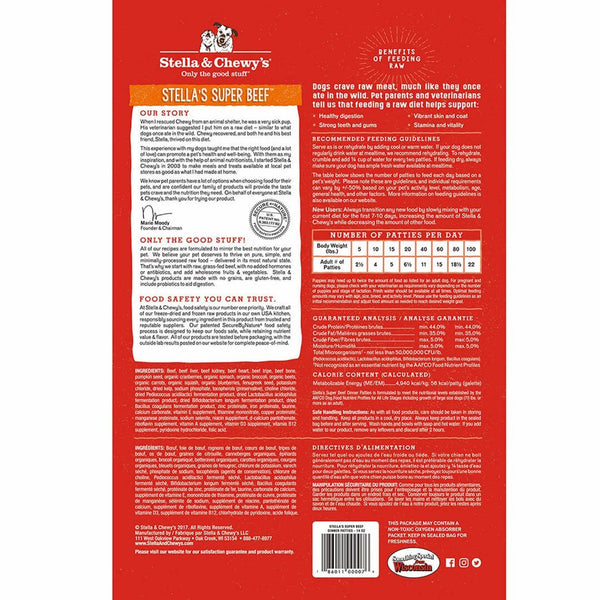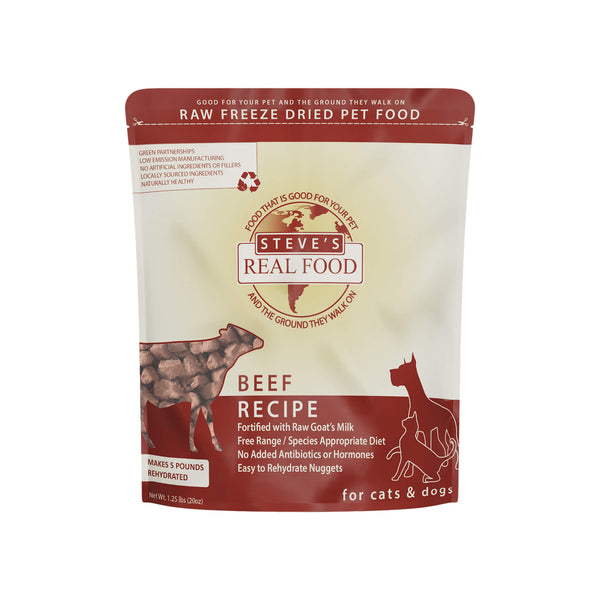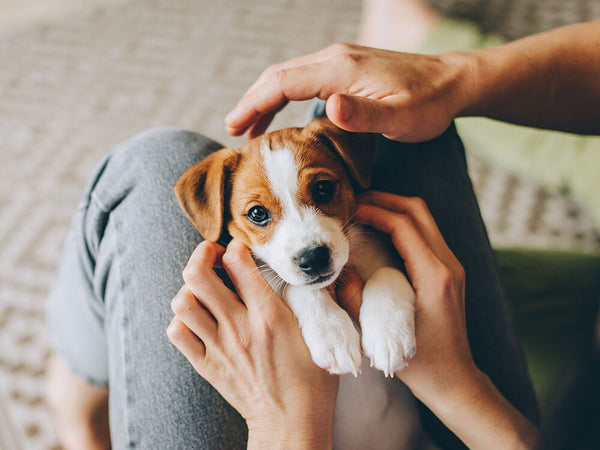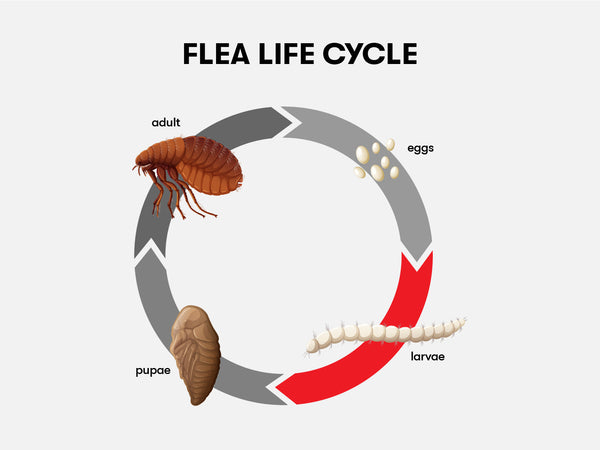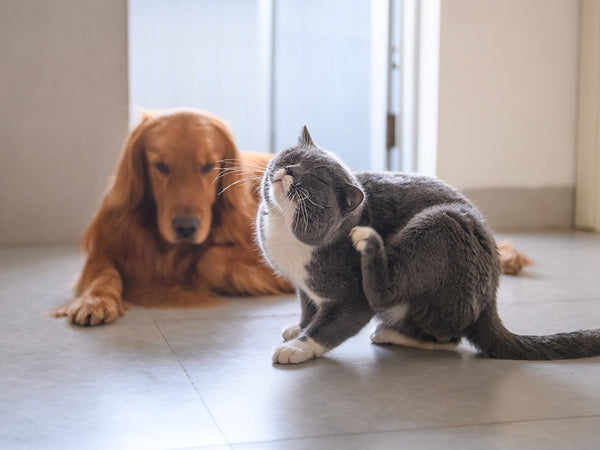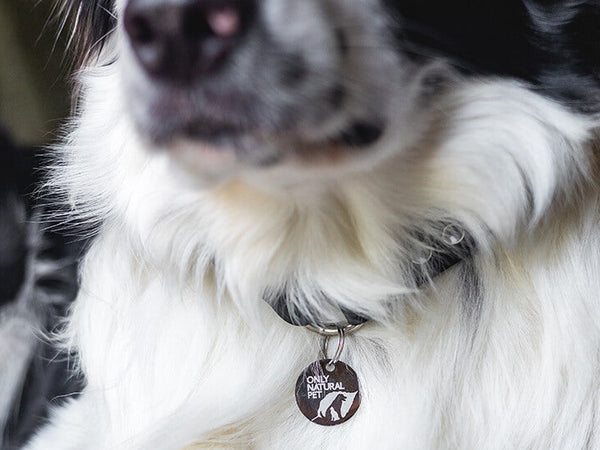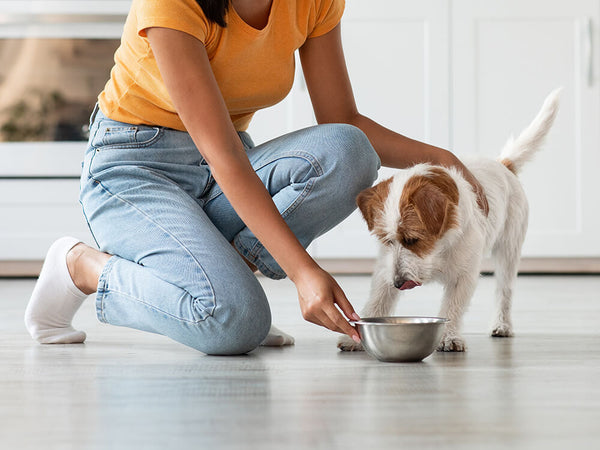Raw Food Feeding Guide for Dogs and Cats
Written by: Dr. Jean Hofve, Holistic Veterinarian, DVM
There are varying opinions about the amount of raw food to feed dogs and cats, and the amount can vary quite a bit with the metabolism and activity level of your pet.
Daily feeding guidelines will also vary by manufacturer. The best way to determine how much raw food to feed your dog or cat is to closely watch your pet's weight for the first month to six weeks on the new diet by either weighing them once or twice per week or checking them physically (feel ribs, hips, etc.) for signs of weight gain or loss and adjusting your feeding practices accordingly.
How Much Raw Food to Feed a Dog?
Feed approximately 2-3% of your dog's weight daily and split this between two meals. For example, a 50 pound dog would need ½ to ¾ of a pound raw dog food per meal. Very active or working dogs may need more and less active "couch-potato" dogs may need less. To calculate the appropriate amount of food to feed your dog, take your dog's weight in pounds and multiply by:
- .02 (inactive/need to lose weight)
- .025 (normal activity/maintain current weight)
- .03 (for very active pets, or to gain weight)
If you're feeding commercial raw dog food, choose a format that best suits your dog's needs. For example, medium to large dog parents prefer patties and chubs because of the larger size, whereas small dog parents often prefer medallions or smaller patties.
Raw Food for Puppies
Feed at least 5% of body weight daily (about ¼ lb per 10 pounds of body weight). This can be split into at least 2 and preferably 3 meals per day.
How Much Raw Food to Feed a Cat?
Feed approximately 2-3% of your cat's weight daily, and split this between two meals. A 10 pound cat would receive 1.5 to 2.5 ounces per meal. Again, this will depend on the individual cat's activity level and metabolism. To calculate the appropriate amount of food to feed your cat, take your cat's weight in pounds and multiply by:
- .02 (inactive/need to lose weight)
- .025 (normal activity/maintain current weight)
- .03 (for very active pets, or to gain weight)
Then, take the total (the amount of food to feed in pounds) and multiply by 16 to get the correct number of ounces to feed each day. Be sure to split the number in half if you are feeding twice a day.
Many cat parents prefer small patties or medallions when feeding their cats.
Raw Food for Kittens
Feed at least 5% of body weight daily (about ¼ lb per 10 lbs. of body weight). This can be split into at least 2 and preferably 3 meals per day.
Want to Give Raw Food a Shot?
Raw Dog Food and Cat Food for Beginners
Transitioning to Raw Pet Food
The length of your pet's transition process to raw food will depend on their overall health, digestive issues, and how finicky they may be.
A healthy dog with no signs of digestive issues (like chronic vomiting, diarrhea, or loose stools) could be transitioned within a week by just gradually adding more raw food and less of the original food to each meal.
Cats may take longer since they tend to be more discriminating about their food and can become habituated to dry food specifically. Cats on dry food only should be transitioned to 2 meals per day of wet cat food first, then slowly transitioned to raw starting with as little as ¼ - ½ teaspoon of raw mixed in with their wet food and gradually increasing the amount of raw food over the course of 2-3 weeks or more. Some cats may prefer the raw on its own, and you can offer them a teaspoon or so before offering their regular meal to see if they show interest.
Pets with digestive issues will need a very gradual transition. It may be best to very lightly cook the food for the first week also, then gradually cook it less and less until you are feeding it completely raw. Start with no more than 1/8 of one meal as raw or lightly cooked raw, and increase gradually over the course of at least 2 weeks.
When feeding raw food or a homemade food for dogs and cats, it can be helpful to start with a base mix. These are usually dehydrated veggies and fruits that can have meat added to them.
Mixing Raw with Dry Kibble or Canned Food
Most manufacturers recommend that you feed raw food separately from dry or wet food. If you are feeding kibble or canned along with raw pet food, you might consider making this the morning meal and raw the evening meal.
If you are switching to raw due to any health issues such as allergies or inflammatory bowel disease, then it is highly recommended that you transition to a completely raw food diet for at least 1-3 months. The longer your pet has been ill, the longer the raw diet should be fed. After the initial time on raw, try a gradual addition of canned, kibble or dehydrated or freeze-dried and see how your pet tolerates it.
Dehydrated and Freeze-Dried Raw Pet Food
Although most people think of frozen formulas when they think of raw food for pets, there are alternatives available in the form of dehydrated dog food, freeze-dried dog food, dehydrated cat food, and freeze-dried cat food.
These formulas are made from raw meat, vegetables, and fruits and have the water removed from them through either dehydration or freeze-drying. All you need to do is add water before feeding your pet.
These offer all the nutritional benefits of raw food but can be easier to handle and prepare. Freeze-dried formulas are very light weight, and so are great for travelling, but tend to me more expensive than dehydrated, so they are used mostly for cats and small dogs. Dehydrated food is more expensive than dry kibble, but not by a lot (around a dollar per day for a 40 pound dog), and it is much healthier than dry kibble. (Think of the difference between corn flakes and fresh salad.)
Rotating Raw Foods for Your Pet
We highly recommend rotating the raw formula you feed (unless your pet is unable to tolerate the changes). Just as with any type of food, feeding a variety of protein sources can help optimize nutrition and wellness. If the raw diet you use does not contain organ meats, rotating organ meats into the diet several times a week is a good idea.




